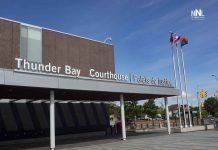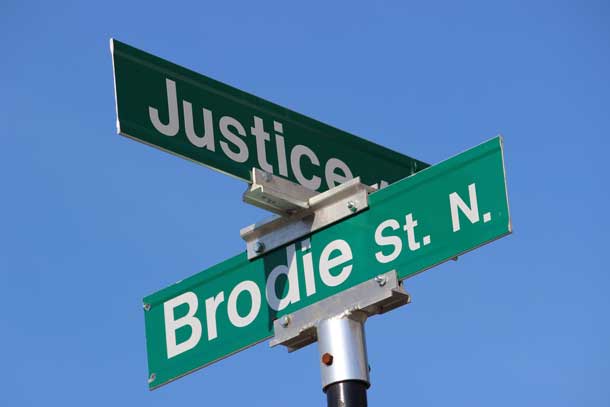OTTAWA – The Correctional Investigator of Canada, Dr. Ivan Zinger, has issued a news release and supporting information indicating that the number and proportion of Indigenous individuals under federal sentence has reached new historic highs.
Dr. Zinger provided this context: “Four years ago, my Office reported that persons of Indigenous ancestry had reached 25% of the total inmate population. At that time, my Office indicated that efforts to curb over-representation were not working. Today, sadly, I am reporting that the proportion of Indigenous people behind bars has now surpassed 30%.”
While accounting for 5% of the general Canadian population, the number of federally sentenced Indigenous people has been steadily increasing for decades.
Dr. Zinger concluded: “It is not acceptable that Indigenous people in this country experience incarceration rates that are six to seven times higher than the national average. Bold and urgent action is required to address one of Canada’s most persistent and pressing human rights issues.”
More recently, custody rates for Indigenous people have accelerated, despite an overall decline in the inmate population. In fact, since April 2010 the Indigenous inmate population has increased by 43.4% (or 1,265), whereas the non-Indigenous incarcerated population has declined over the same period by 13.7% (or 1,549). The rising numbers of Indigenous people behind bars offsets declines in other groups, giving the impression that the system is operating at a normal or steady-state. As Dr. Zinger noted, nothing could be farther from the truth.
The Correctional Investigator suggests that surpassing the 30% mark indicates a deepening “Indigenization” of Canada’s correctional system. Dr. Zinger referred to these trends as “disturbing and entrenched imbalances,” noting that the numbers are even more troubling for Indigenous women, who now account for 42% of the women inmate population in Canada. The Correctional Investigator drew attention to the fact that federal corrections seem impervious to change and unresponsive to the needs, histories and social realities behind high rates of Indigenous offending.
Dr. Zinger stated, “On this trajectory, the pace is now set for Indigenous people to comprise 33% of the total federal inmate population in the next three years. Over the longer term, and for the better part of three decades now, despite findings of Royal Commissions and National Inquiries, the intervention of the courts, promises, and commitments of previous and current political leaders, no government of any stripe has managed to reverse the trend of Indigenous over-representation in Canadian jails and prisons. The Indigenization of Canada’s prison population is nothing short of a national travesty.”
Dr. Zinger related that while these numbers are profoundly concerning, they are not altogether surprising given the consistently poor outcomes for Indigenous people in federal corrections. Year after year, his Office has documented that Indigenous inmates are disproportionately classified and placed in maximum security institutions, over-represented in use of force and self-injurious incidents, and historically, were more likely to be placed and held longer in segregation (solitary confinement) units. Compared to their non-Indigenous counterparts, Indigenous offenders serve a higher proportion of their sentence behind bars before granted parole. Finally, a recent national recidivism study shows that Indigenous people re-offend or are returned to custody at much higher levels, as high as 70% for Indigenous men in the Prairie region.
Though many of the causes of Indigenous over-representation reside in factors beyond the criminal justice system, Dr. Zinger pointed out that all of the outcomes noted above fall under the exclusive domain of the Correctional Service of Canada. For too long, CSC has recused itself from any responsibility for Indigenous over-representation, preferring instead to simply reiterate that corrections, being situated at the back (or receiving) end of the criminal justice system, exerts no control or jurisdiction over “upstream” factors that decide who is sent to prison, for what reasons or for how long.
In his comments, Dr. Zinger addressed this long-standing fallacy in direct terms. “In failing to close the outcomes gap between Indigenous and non-Indigenous offenders, the federal correctional system makes its own unique and measurable contribution to the problem of over-representation. CSC needs to accept its share of responsibility, recognizing that tweaks around the edges of the system simply won’t cut it. The Service needs to make dramatic changes to reduce readmissions and returns to custody, better prepare Indigenous offenders to meet earliest parole eligibility dates and more safely return Indigenous offenders to their home communities. Reforms of this nature will require a significant and proportional realignment of CSC priorities and resources. The government of Canada needs to lead and direct these efforts.”
The same urgent calls to action are raised in the final reports of the Truth and Reconciliation Commission, the National Inquiry into Missing and Murdered Indigenous Women and Girls (MMIWG), as well as two recent parliamentary committee studies on Indigenous peoples in the criminal justice system. These bodies have called upon the federal government to implement measures recommended by the Office including:
- Transfer resources and responsibility to Indigenous groups and communities for the care, custody, and supervision of Indigenous offenders.
- Appoint a Deputy Commissioner for Indigenous Corrections.
- Increase access and availability of culturally relevant correctional programming.
- Clarify and enhance the role of Indigenous elders.
- Improve engagement with Indigenous communities and enhance their capacity to provide reintegration services.
- Enhance access to screening, diagnosis, and treatment of Indigenous offenders affected by Fetal Alcohol Spectrum Disorder.
- Develop assessment and classification tools responsive to the needs and realities of Indigenous people caught up in the criminal justice system.
As the ombudsman for federally sentenced offenders, the Office of the Correctional Investigator serves Canadians and contributes to safe, lawful and humane corrections through independent oversight of the Correctional Service of Canada by providing accessible, impartial and timely investigation of individual and systemic concerns.








